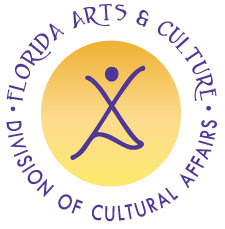Bill and Camille Cosby Loan Private Collection to the Smithsonian’s National Museum of African Art
Selected Works Never Before Seen Publicly. One of the world’s preeminent private collections of African American art will have its first public viewing later this year at the Smithsonian’s National Museum of African Art. “Conversations: African and African American Artworks in Dialogue” brings together artworks from two world-class collections: the National Museum of African Art and the William H. and Camille O. Cosby Collection. The exhibition, which opens at the museum Nov. 9 and remains on view through early 2016, is a major part of the museum’s 50th anniversary, celebrating its unique history and contributions toward furthering meaningful dialogue between Africa and the African diaspora.
“Conversations” presents selected pieces from the Cosby collection, including works by Romare Bearden, Elizabeth Catlett, Beauford Delaney, Loïs Mailou Jones, Jacob Lawrence, Keith Morrison, Faith Ringgold, Augusta Savage, Henry Ossawa Tanner and Alma Thomas. With the exception of one work of art, the Cosby collection has never been loaned or seen publicly and only rarely and selectively published. These and other works of African American art are placed in thematic dialogue with African traditional works of art, including a Kongo female figure with child from the Democratic Republic of the Congo, a lidded bowl from Nigeria by the Yoruba master artist Olowe of Ise and a Nuna butterfly mask from Burkina Faso, and with modern and contemporary works of art by artists, including Fodé Camara from Senegal, Godfried Donkor from Ghana and William Kentridge from South Africa. The exhibition and its accompanying publication are organized to explore intersecting ideas about history, creativity, power, identity and artistry in ways that resonate with people the world over.
Henry Ossawa Tanner 1859–1937, United States
The Thankful Poor 1894
The Collection of Camille O. and William H. Cosby Jr.
Photograph by Frank Stewart
The Thankful Poor 1894
The Collection of Camille O. and William H. Cosby Jr.
Photograph by Frank Stewart
The unique experience of viewing exceptional African and African American art reinforces the Cosbys’ energizing message: We should all welcome the world of art into our lives—it belongs to us all if we only go out there and make it our own. Bill Cosby also introduced African American art to millions worldwide as a prominent feature of his landmark television series three decades ago.
“At the National Museum of African Art we are excited to show the world these treasured African American artworks for the first time ever,” said Johnnetta Betsch Cole, director of the museum. “The exhibition will encourage all of us to draw from the creativity that is Africa, to recognize the shared history that inextricably links Africa and the African diaspora and to seek the common threads that weave our stories together and over time as part of the human family.”
“It’s so important to show art by African American artists in this exhibition at the Smithsonian’s National Museum of African Art,” said Bill Cosby. “To me, it’s a way for people to see what exists and to give voice to many of these artists who were silenced for so long, some of whom will speak no more.”
“Our mission can be summarized by Elizabeth Catlett, ‘Art must answer a question, or wake somebody up, or give a shove in the right direction,’” said Camille Cosby.
Exhibition Highlights
- Rare late 18th- and early 19th-century portraits by the Baltimore-based African American artist Joshua Johnston
- Explorations of black spirituality in the 1894 masterwork “The Thankful Poor” by Henry Ossawa Tanner and in the 1943 painting “Boy and the Candle” by South African artist Gerard Sekoto
- The struggle for freedom and equality explored through the 1989 sculpture “Toussaint Louverture et la vieille esclave” by the Senegalese artist Ousmane Sow and the 1982 painting “Still Life: Souvenir No. IV” by the African American artist Eldzier Cortor
- History, knowledge and memories explored through Cosby family quilts and African textile
- A section on music and urban life that includes African musical instruments and African and African American modern and contemporary works
Show info










No comments:
Post a Comment